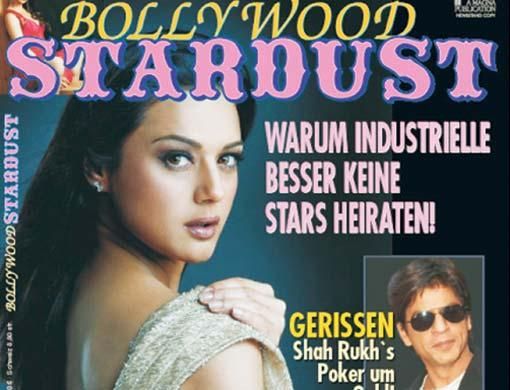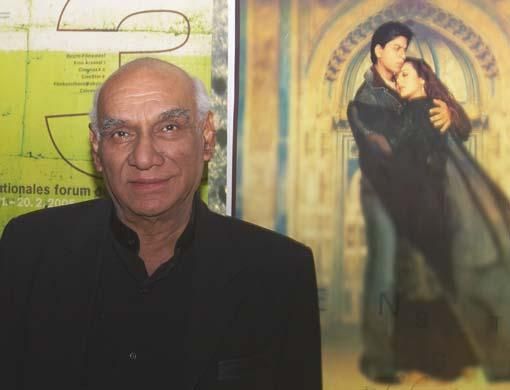Renate Sommer, a 22-year-old student from Berlin who likes to wear a colourful sari, hopes someday to migrate to the "land of the Taj Mahal, Yoga and Bollywood", and belongs to the growing tribe of Bollywood fans in Germany. Like Sommer, thousands of young Germans are captivated by the music and themes of Bollywood films.
Germany's "Bollywood fever" is manifested in the soaring sales of Bollywood films available on DVDs and video cassettes in shops catering to this clientele.
Hindi films — "Bollywood" is a more recent coinage — in Germany were viewed in the 1970s and 1980s, primarily, by South Asians in the large German cities. Indeed, the general perception of the average German about India was somewhat Kiplingesque; India was — and in some quarters continues to be — identified as a land of snake charmers, abject poverty, hordes of undernourished beggars roaming the streets, dismal hygienic conditions and corrupt government officials.
But the perception gradually improved with India's rise as an economic power and the arrival of highly qualified Indian software experts who are needed to strengthen Germany's technological biceps.
The changing tastes of young Germans who, unlike their forefathers, are more open to new ideas, music, culture and cuisine, have paved the way for Bollywood. Also, many Germans, tired of Hollywood's excessive violence, no longer mind the emotional outpouring to the accompaniment of song-and-dance routine that is the hallmark of Bollywood films.
"Bollywood has witnessed a surge in popularity because German viewers want something different. The emotional and saccharine-sweet Bollywood films are a change from the violence of Hollywood films. Many Germans even hum Bollywood tunes though they may not understand the words," says Wolfgang Huber, a Frankfurt businessman who regularly visits Mumbai to buy textiles and sees Bollywood films in Mumbai's cinema houses with his Indian friends.
The annual Berlinale — the Berlin film festival which is often described as "the German Oscars" — provides an elegant testimony to the growing interest in Bollywood. If in the past an Indian actress appearing in a colourful sari at the Berlinale was stared at as an exotic bird in the Western film dominated festival, nobody bats an eyelid today when Indian actresses appear in glittering saris and other attire along with their male counterparts dressed in Nehru jackets.
Mira Nair, Deepa Mehta, Amitabh Bachhan, Shah Rukh Khan, Aishwarya Rai, Hrithik Roshan and Kareena Kapoor are popular not only with Berlinale's film experts but also among German fans.
It is also not surprising that Bollywood-dedicated magazines have begun to surface in German. Cinefilms, a Frankfurt-based film distribution company, collaborates with India's Magna Publishing Group which publishes Stardust, a long-running Indian film magazine, and brings out its German version called Bollywood Stardust which provides detailed information, interviews and news about Bollywood actors and films — all in impeccable German. Dorothee Wenner, a German expert on Bollywood who works for the festival and makes documentary films, believes that the interest will grow further with the increasing people-to-people contact — through tourists, businesspeople and academics visiting each other's country.
Wenner, the author of Fearless Nadia, a biography published by Penguin Books India of former actress Nadia who did action roles in Indian films in the 1930s, 1940s and early 1950s, and is best known for her portrayal of a whip-wielding female Zorro in the film Hunterwali, believes that Bollywood's popularity is here to stay.
"It is not a passing fad. Bollywood will acquire a greater fan following in the years to come because the youth in this country wants something different, something exotic, emotional and entertaining at the same time, something different from the Hollywood fare," Wenner says.
In November 2004, the German television channel RTL-II broadcast the blockbuster Kabhi Khushi Kabhi Gham which got high viewer ratings. The channel then contracted more blockbuster films for screening. Indeed, young Germans are even forming "Bollywood fan clubs".
According to Wenner, Bollywood also enjoys popularity among Turks, Arabs and other Asians living in Germany. A two-week extravaganza called "Bollywood & Beyond", held in Stuttgart in mid-July, was one of the biggest Bollywood events held in Germany. The festival has been an annual feature since 2004.
Indeed, capitalising on the popularity of Bollywood, the organisers linked it with their main event "Indo-German Business Forum" which was aimed at fostering closer business, economic and cultural ties.
"The festival has emerged as a bridge to India. It extends beyond the film industry now, as the great interest of the corporate sector shows," says Svenja Kranz from the Film Bureau of Baden-Wuerttemberg, the state in which Stuttgart lies. Corporate players such as Bosch, Deutsche Bank, KPMG and others backed the film festival.
The opening film, Outsourced by John Jeffcoat, was about a call centre in the US which moves to India. Another highlight was Vanaja, a maiden venture by Rajnesh Domalpalli who won the Golden Bear at the Berlinale.
"Indian films, unlike Western films, do not have violent sequences. This is well-received by viewers," says a spokesperson of the Film Bureau of Baden-Wuerttemberg. However, this view is not shared by many German viewers who see a "disturbing trend" in Bollywood filmmakers' propensity to imitate Hollywood by injecting strong doses of violence in their films.













